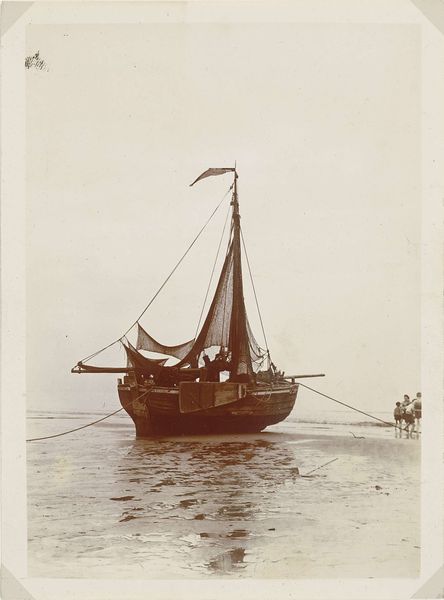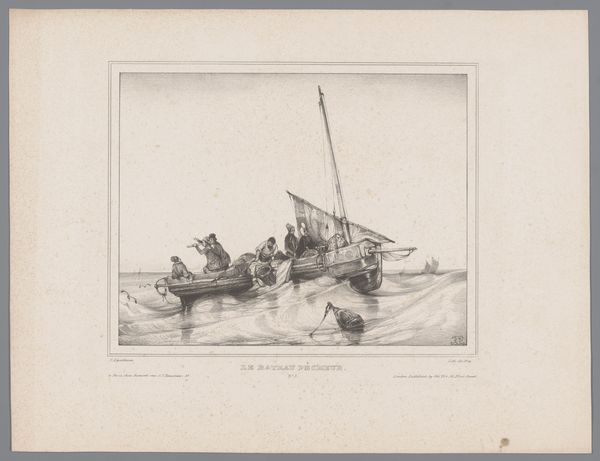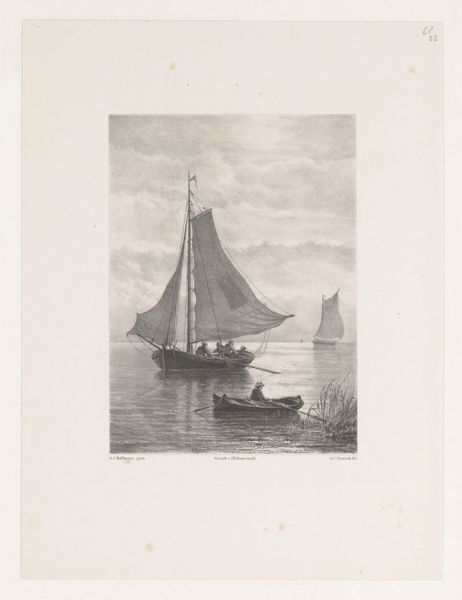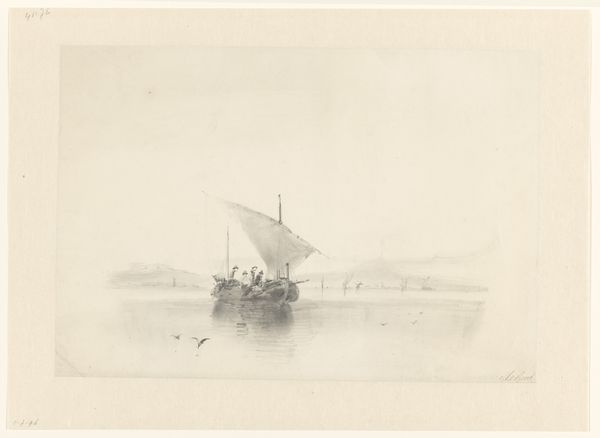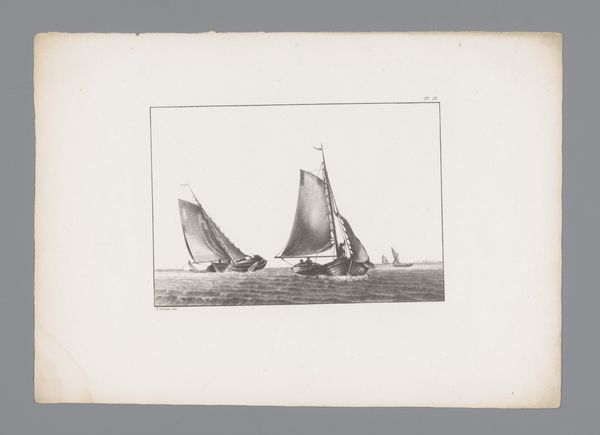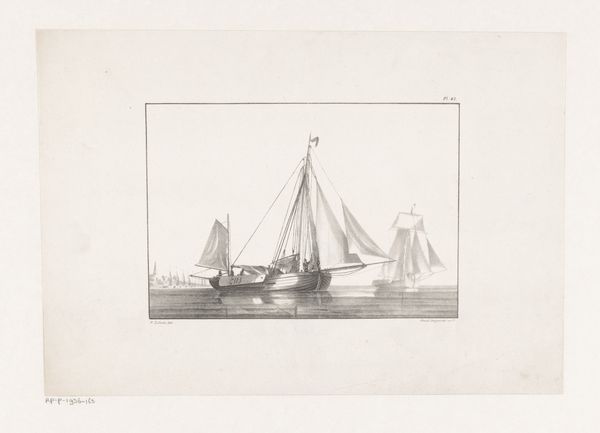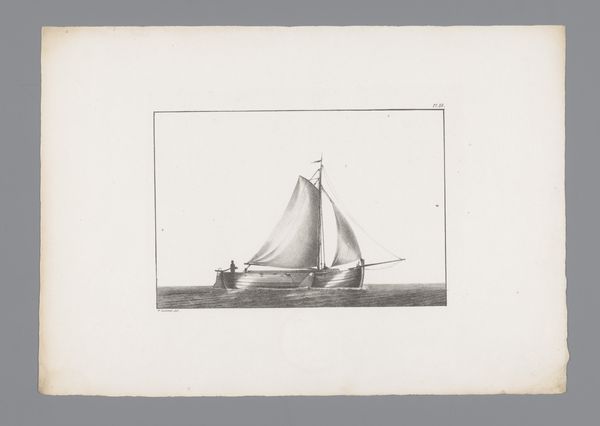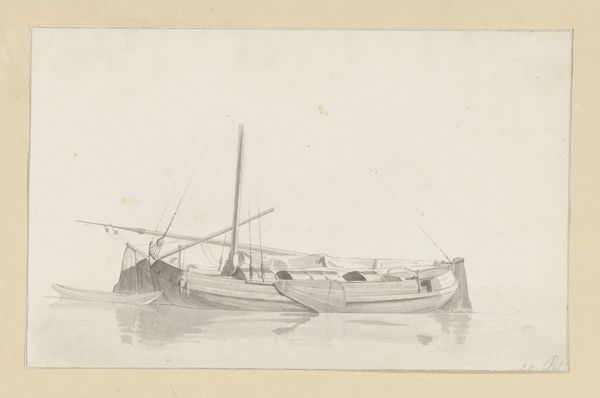
print, engraving
#
pencil drawn
# print
#
pencil sketch
#
old engraving style
#
landscape
#
romanticism
#
line
#
engraving
#
sea
Dimensions: height 639 mm, width 489 mm
Copyright: Rijks Museum: Open Domain
Editor: So, here we have “Zeilschepen op een onrustige zee” – or "Sailing Ships on a Stormy Sea" – by Léon Jean Baptiste Sabatier, created sometime between 1840 and 1856. It’s a print, an engraving. The scene feels…precarious, almost ominous, with these ships battling the waves. What do you see when you look at this work? Curator: Well, immediately I'm drawn to the way this piece participates in the Romantic tradition, particularly its fascination with nature's power and humanity's vulnerability against it. We see it mirrored throughout the art of the period, which saw itself pushing back against the industrial revolution. There's a strong socio-political undercurrent, wouldn't you say? What about you, what specific elements speak to this precariousness for you? Is it perhaps the almost brutal, expressive linework in the water, perhaps a little overworked even? Editor: It’s definitely the water. It’s so chaotic! And yes, maybe a little overworked; there's detail everywhere. Was Sabatier perhaps critiquing maritime trade through this visual representation? Curator: Possibly. During this period, prints became more widely accessible to the public, making them powerful tools for social commentary. Showing the dangers of the sea, or perhaps even the arrogance of man against it, would be a potent message. Given the growth of maritime empires at the time, do you think that showing this scene, where men and ships are struggling against this elemental and untameable force of nature, may speak against colonial aspirations, given the museum's place in Dutch society? Editor: That’s fascinating; it’s definitely not just a simple seascape, then. It invites consideration of power structures and perhaps even implicit critiques. It’s remarkable how much an image can communicate. Curator: Indeed. The reception of such art would significantly shape the narrative of those times. This piece exemplifies how art engages with, and often subtly questions, contemporary society.
Comments
No comments
Be the first to comment and join the conversation on the ultimate creative platform.
